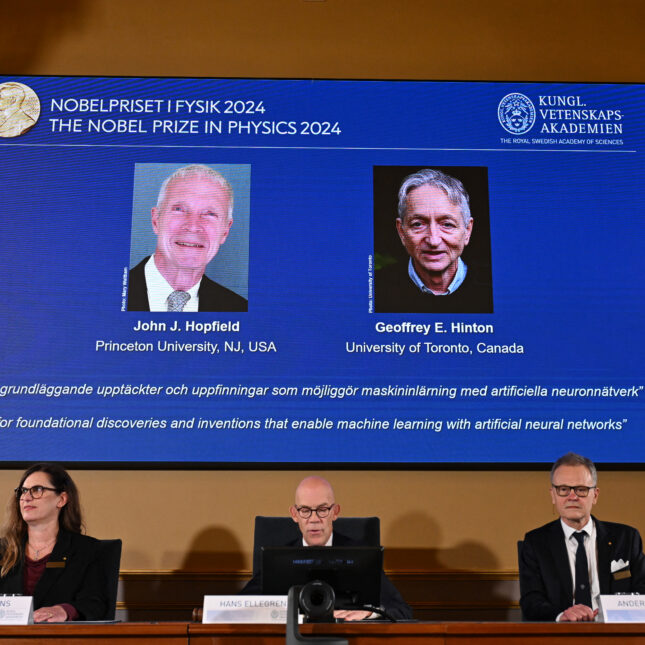
LONDON — Two pioneers behind machine learning — a technology that is already transforming society in ways big and small and that carries profound ethical questions — won the Nobel Prize in physics on Tuesday.
The award went to John Hopfield, 91, of Princeton University and Geoffrey Hinton, 76, of the University of Toronto, “for foundational discoveries and inventions that enable machine learning with artificial neural networks,” the Nobel committee announced.
The researchers, who will share the 11 million Swedish kronor (just over $1 million) prize, drew inspiration from our brains’ own neural pathways and combined them with concepts from physics to develop machine learning tools, helping fuel the booming field of artificial intelligence. Hopfield and Hinton join a list of physics Nobel laureates that prior to this year had 225 members, including five women.
In announcing the prize, the Nobel committee described Hopfield and Hinton’s work as not just helping advance research across different fields of physics — from material science to particle physics to astrophysics — but as something that was already changing daily life, with technology including facial recognition and language translation building off of the research.
Ellen Moons, the chair of the Nobel’s physics committee, also pointed to the applications in medicine.
“The laureates’ discoveries and inventions for the building blocks of machine learning can aid humans in making faster and more reliable decisions, for instance, when diagnosing medical conditions,” she said.
But Moons also nodded to the thorny questions that such a powerful technology has prompted.
“Its rapid development has also raised concerns about our future,” she said. “Collectively, humans carry the responsibility for using this new technology in a safe and ethical way, for the greatest benefit of humankind.”
The prize-winning work dates back to the 1980s, when Hopfield, who was born in Chicago, and Hinton, who’s originally from London, came up with tools that mimicked how our brains, through various computations, can recognize patterns.
Specifically, Hopfield invented a way for a network to store and reconstruct images, effectively a form of memory. Hinton then developed another method that can pluck out properties from a data set, enabling such tasks as identifying specific components of an image.






